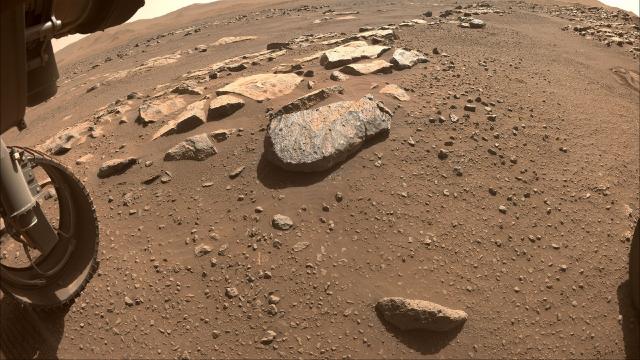NASA’s valiant little Perseverance rover has spent quite a few months on Mars now, but it has just achieved one of its primary purposes: picking up rocks.
It may seem like one small step for a rover, but it’s one giant leap for mankind as we now have our very first piece of the planet Mars locked, stocked and secured for travel back to Earth.
Perseverance has been trying to collect samples for some time now with a couple of failed attempts along the way.
A month ago, the rover appeared to have collected its first piece of Martian rock. The plot then thickened as the rover’s sample tube appeared empty. NASA scientists believe this was due to the difficult composition of the surface sample collected.
Not one to be disheartened, the rover then approached its second sampling location. NASA confirmed the second extraction was a success earlier today.
It’s official: I’ve now captured, sealed, and stored the first core sample ever drilled on another planet, in a quest to return samples to Earth. It’s the first in a one-of-a-kind Martian rock collection. #SamplingMars
Read more: https://t.co/bs4Hd4Fzyw pic.twitter.com/2jwF7cOcMZ
— NASA’s Perseverance Mars Rover (@NASAPersevere) September 6, 2021
This marks the collection of the first core sample ever drilled on another planet.
The sample was taken by using the rotary percussive drill attached to the rover’s robotic arm. It was extracted from a briefcase-sized rock nicknamed ‘Rochette’.
The surface sample was transferred to a titanium sample tube, where it was measured and photographed and then hermetically sealed.
“With over 3,000 parts, the Sampling and Caching System is the most complex mechanism ever sent into space,” said Larry D. James, interim director of JPL, in a media release.
Perseverance is equipped with 43 sample tubes and will continue to rove around collecting bits of Mars’ Jezero crater for years to come.
How will Perseverance get its Mars samples back to Earth?
The process of returning these samples to Earth is quite complex. NASA is collaborating with the European Space Agency on a relay mission to collect the samples and return them to us.
This starts with a second “fetch rover” that will arrive on Mars and collect the samples from the Perseverance rover and return them to the Mars Ascent Vehicle. Alternatively, if Perseverance lives long enough, it could also travel its samples back to the Ascent vehicle.
The Mars Ascent Vehicle will then launch the samples into orbit, where another orbiter will rendezvous with the samples and secure them in a containment capsule. This orbiter will then ferry the samples back to us.
It’s a pretty long and difficult process, but if it works we’ll have our first piece of Mars on Earth as early as 2031.
